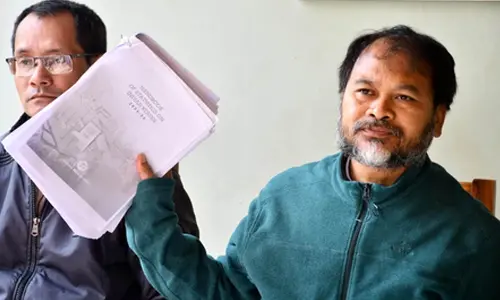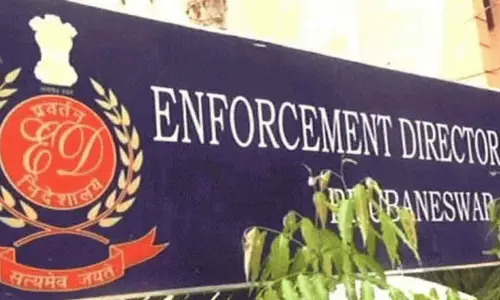Odisha may turn haven for espionage

Need to make internal security and counter-intelligence absolutely foolproof
The canvas of espionage in Odisha, experts say, is much larger than what meets the eye. The very fact that the Pakistan-based Inter-Services Intelligence (ISI) has penetrated the rural Odisha targeting youths to indulge in anti-national activities is shocking. If the unscrupulous employees of such a highly guarded and secretive defence setup as DRDO can be honey-trapped with impunity, it only goes to prove how porous and defective the system is. Classified technical information with regard to launch of various types of missiles from the ITR in Chandipur was accessed by the ISI at least for a decade despite the first culprit, a contractual employer, being arrested in 2015
Greed for easy money has set a very disturbing trend in Odisha as more and more cases of espionage are getting detected. The very fact that the Pakistan-based Inter-Services Intelligence (ISI) has penetrated the rural Odisha targeting youths to indulge in anti-national activities is shocking. Earlier, the ISI planted moles in the DRDO’s Integrated Test Range (ITR) facility at Chandipur, Balasore district, by honey-trapping a handful of its contractual employees and a senior technical officer – and now civilians. Three persons were recently arrested by the Special Task Force (STF) of the state Crime Branch for fraudulently procuring a large number of pre-activated SIM cards and allegedly selling the onetime passwords (OTPs) to ISI operatives. This could well be the tip of the iceberg as the involvement of many more in the state is being suspected largely because of settlement, some legal and some illegal, of Bangladeshi nationals along the long coastline of Odisha. Their invasion, however, continues unabated.
When a former teacher of a private Industrial Training Institute Pathani Samant Lenka, Saroj Kumar Nayak and Soumya Patnaik of Nayagarh and Jajpur districts respectively were nabbed by the STF recently, 19 mobile phones, 47 pre-activated sim cards, 23 empty SIM covers and 61 ATM cards were seized from them. The trio procured the cards in bulk by using fake IDs of gullible villagers without their knowledge and sold the OTPs and links generated to the ISI agents in India. Smart as they were, OTPs were simultaneously sold to cyber fraudsters to swindle people. The SIM cards and the OTPs were reportedly used by Pakistani operatives for creating fake e-mail IDs and various social media accounts. The same were also used for online shopping to cater to the needs of the terror outfits in India.
All along, the impression given was that the accounts were of the Indians while the ISI operatives had full control over those to spread radicalisation, spying, sextortion and anti-India propaganda.
The youngest of the trio, Soumya Patnaik (19) is believed to have lured the other two into the business and admittedly each was earning about Rs 50,000 per month and the racket was on for years. They even had knowledge of the SIM cards being used by the Pakistani spy agency and were in touch with a woman ISI agent arrested last year from Rajasthan in a honey trap case, Guddu Kumar, a suspected ISI agent arrested in West Bengal last December, and some agents in Delhi and Gujarat. In fact, Lenka, the former ITI teacher, had gone into hiding in Hyderabad after Guddu Kumar’s arrest. By then, the STF had a whiff of the activities of the trio and was keeping a close tab on their movements for the last two and a half months. While the STF has sought the help of the National Investigating Agency (NIA) and the National Payment Corporation of India (NPCI) for further clues and details of the payment patterns to the accomplices, more skeletons reportedly tumbled out of the cupboards during the trio’s three-day police remand.
The NPCI, meanwhile, has shared the details of the payments made to the trio via bank accounts and UPI. The three reportedly admitted to have received payments in crypto currency also.
Coming to the DRDO’s vulnerability, it is equally shocking how classified technical information with regard to launch of various types of missiles from the ITR in Chandipur was accessed by the ISI at least for a decade despite the first culprit, a contractual employer, being arrested in 2015. That the defence secrets continued to leak from the test range after the alarm was sounded eight years ago, casts a shadow on the surveillance apparatus of the DRDO. In 2021, five more contractual employees of the ITR, including a driver, were caught for passing on information to the ISI. It did not stop there. Again, in February last a honey-trapped Senior Technical Officer Baburam Dey was arrested for allegedly transmitting defence secrets to a woman ISI agent. Dey was working in the telemetry department of the ITR that maps and monitors the performance of missiles after test firing.
Dey was found chatting for over a year with a woman who posed herself as a science student from Uttar Pradesh with “interest in higher studies and research.” He was said to have even supported her financially for her studies as she came from a poor background and subsequently shared sensitive information, images, videos of the launching complex and missiles with the agent in exchange of nude photos and videos. If the unscrupulous employees of such a highly guarded and secretive defence setup can be honey-trapped with impunity, it only goes to prove how porous and defective the system is.
While India takes pride in its robust internal security and counter-intelligence prowess, it is obvious that much more needs to be done to make it absolutely foolproof. It is time the nation devised a stronger mechanism to counter the ISI’s deployment of social media as a tool to destabilise India. Explosion in technology, particularly in telephony, has brought in a sea change in human lives but at the same times posed insurmountable challenges. Unfortunately, not all smartphone users in rural heartlands are aware of the security hazards posed by the multitude of apps available. In this context, it is meaningless to discuss the efficacy of the state’s intelligence wing which obviously had no clue about the involvement of the three civilians in espionage. STF, in this case, was admittedly tipped off by the Central Bureau of Intelligence (CBI).
The canvas of espionage in Odisha, experts say, is much larger than what meets the eye. The porous coastline from Chandaneswar in North to Astaranga in south has been completely taken over by the Bangladeshi nationals some of whom have managed to acquire Indian citizenship courtesy politicians ever eager to expand their vote base. There is no exact head count of how many Bangladeshis have infiltrated the state over the years and made pockets of settlements by way of unauthorised occupation of land. The state government clearly has no plan in place to monitor their arrival by sea route or to effectively prevent the influx. Unless a time-bound action plan to deal with the issue is worked out, Odisha could well be a haven for anti-national activity.














